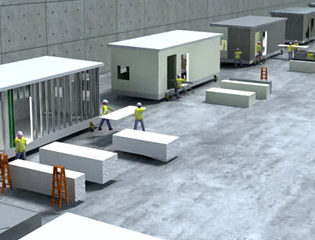
MYTH 1: Women Don’t Belong in the Trades
While men undeniably dominate positions in the construction industry and the trades have been traditionally defined as “male occupations,” this is an outdated sentiment; success in the trades isn’t about gender, it’s about skill and ability. Since 1981, Canadian Construction Women has worked to pave the way for women in trades in Canada with the sole purpose of attracting and retaining women to work in the industry. In Alberta, Women Building Futures has provided women with training and recruitment opportunities in the trades since 1998. Focusing on workforce attraction, assessment and skills training, workforce training and coaching, and job retention, WBF works with Alberta’s construction industry to breakdown stereotypes and create opportunities for women. But the key to making the trades more welcoming to women is eliminating barriers; construction companies are leading the way in creating policies and procedures that support women and help to change old, antiquated mindsets about their role in construction. If you’re a woman thinking about joining the trades in Alberta, learn more here.
MYTH 2: Construction Work Only Offers Dead-End Jobs for the Uneducated and Unskilled
For generations, a university degree and a white-collar job was the gold standard, with many frowning upon jobs in construction. But this myth, that you can’t be smart or skilled and work in construction is both unfair and untrue. In fact, the trades are called the skilled trades for a reason: each trade requires extensive and specific knowledge and training. Apprenticeships aren’t cake walks, they require study, attentiveness, and hard work to succeed and earn journeyman tickets. Not to mention that many construction workers boast advanced education and receive continual, ongoing training throughout their careers. The format for learning is more kinesthetic, but you have to succeed both in the field and in the classroom. Some of the essential skills required for success in construction include continuous learning, decision-making, digital technology, document use, job task planning and organization, numeracy, oral communication, problem solving, reading text and drawings, memory retention, and interpersonal skills. Lastly, construction is a multi-billion dollar industry with promotional opportunities for ambitious workers and growth opportunities for skilled tradespeople with an entrepreneurial spirit.
MYTH 3: The Construction Industry is Old Fashioned, Traditional, and Bad for the Environment
Construction tends to conjure images of workers slinging hammers, building from paper drawings, and creating a lot of waste. But today, the construction industry is continually creating and using new technologies to create better, more environmentally friendly buildings and structures while also overcoming its perceived limitations. Nearly every construction firm now employs 3D Building Information Modeling technology and Virtual Reality software on projects and uses technologically advance building methods like modular construction and pre-engineered steel construction. Demands for green building to standards like LEED® and Green Globes push builders to implement green technology into their construction.
Overall, the construction industry continues to grow and evolve, from focusing on hiring women to providing career opportunities and advancement to utilizing technologies that enhance efficiency and are environmentally friendly, the widespread myths about the industry are just plain false.






